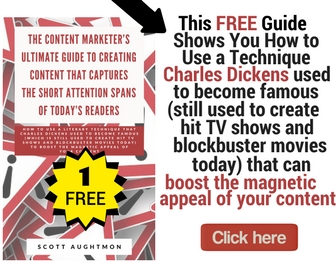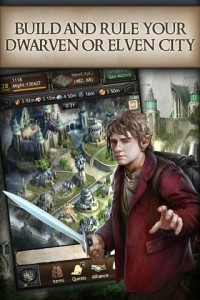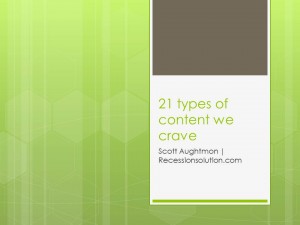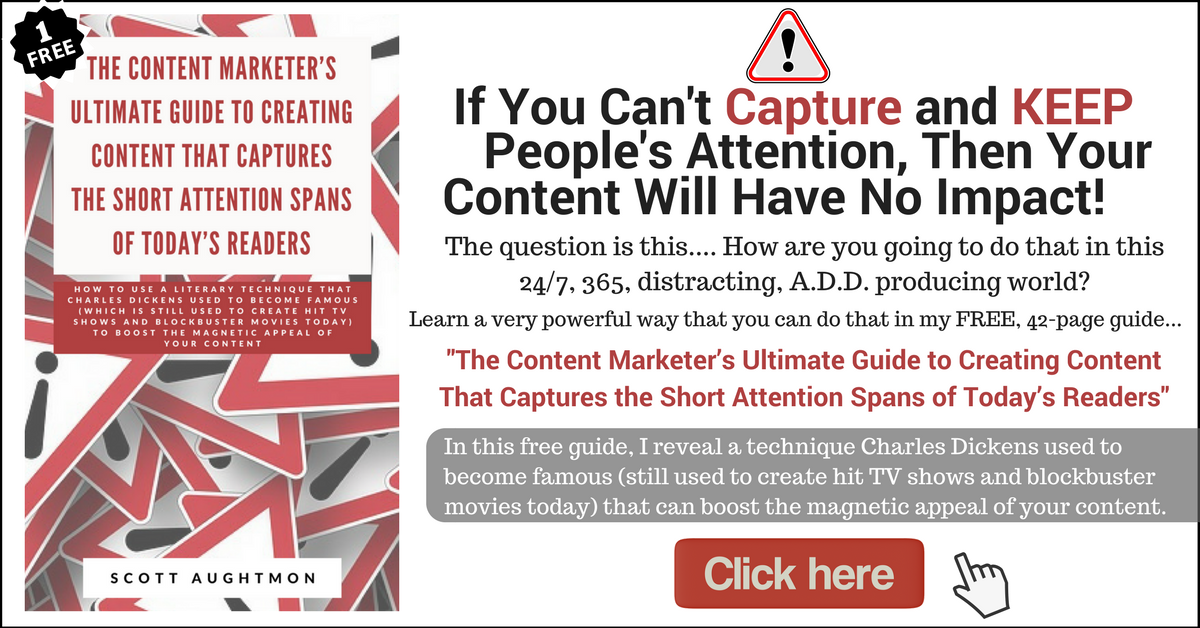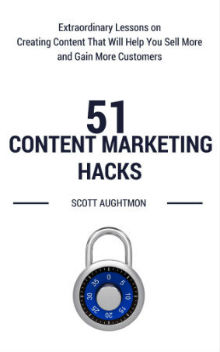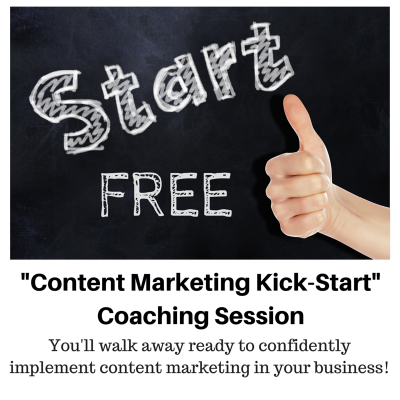Father Christmas and the Little-Known Story That Prepared Tolkien to Write the Hobbit
The new movie “The Hobbit” opened this last weekend and not only crushed the competition, but also set a new December record.
If you read my post over at ContentMarketing Institute.com, then you know some of the origins of J.R.R. Tolkien’s original story.
What I want to share with you today is a little more of the backstory of how The Hobbit got its beginning.
Not only was Tolkien an amazing writer, but he was also a devoted father.
In 1920, when his son was three years old, Tolkien began each Christmas to write a letter from Father Christmas.
Each letter contained details of Father Christmas’ adventures and was delivered in an envelope, which included North Pole stamps and postage marks as designed by Tolkien.
What I love about this is that each year he would add more characters.
He’d created characters such as the Snow Man (who was his gardener), the North Polar Bear (who was Father Christmas’ accident-prone helper), an elf named Ilbereth (who was his secretary), and other various characters.
The major characters would be a part of certain letters and they would reveal tales to the children of Father Christmas. Tales like:
- His battles against goblins
- How the reindeer got loose and ended up scattering presents all over the place
- How the Polar Bear climbed the North Pole and accidentally fell through the roof of Father Christmas’ house
What I want you to realize is that many now believe that it was elements of the stories in these letters that inspired parts of The Hobbit and The Lord Of The Rings.
The success of The Hobbit movie is definitely due to J.R.R. Tolkien’s amazing ability to create elaborate and engaging stories.
But the success also has much to do the with the complex and powerful marketing campaign that New Line Cinemas has implemented over this last year.
I revealed the first 6 content marketing strategies learned from The Hobbit in my post at ContentMarketingInstitute.com.
Today I will share with you six more content marketing lessons we can learn from the launch of the new movie The Hobbit.
Four More Content Marketing Strategies and Six More Lessons
In my ContentMarketingInstitute.com post, I revealed to you the long term content marketing strategy that movie studios use to promote films like The Hobbit.
Below you’ll learn the final six lessons contained in these four strategies that the movie studios use in the final weeks before a film’s release.
Weeks before your release, flood your niche with ads and content
Many content marketers have come to believe that it’s best to simply remove advertising from their arsenal and focus only on content marketing.
The movie studios know better than this.
They don’t eliminate ads. They coordinate them into their overall push to make a movie memorable and desirable.
In the weeks before a movie launches, movie studios flood the public with many images and promos for the movie.
They do this on such a level that there is no way for the public to be unaware of the film.
In fact, the studios do everything they can to try to make their film become a “can’t miss” event.
The types of ads that movie studios use are:
- Bus advertisements
- Billboards advertisements
- TV advertisements that feature more teaser trailers
- Magazine and Newspaper ads in the major newspapers and magazines
Here is just one of the many billboard ads that they have used for The Hobbit
Photo from dailybillboard.blogspot.com (Go there to see more great pics of Hobbit billboards examples)
We must realize that ads, when used with powerful content marketing, are still very useful.
If you think about it, most of the ads that movie studios use are content marketing in the form of images.
We need to think of ways we can flood our niche with ads that work together with the content we are posting, so we can make our products and services more memorable – so they’ll become a “must try” event.
Here are some ways you can apply these ideas:
- Banner ads on popular websites in your niche
- Google ads focused on keywords
- Youtube trailers served via Youtube ads
- Photos posted to Flickr and/or Instagram
Let’s look at the next lesson we can learn from the studios.
As a part of this flood of promotion, the studios have the stars from the movie appear on major talk shows
This brings us back to that point I made on ContentMarketingInstitute.com, that the studios do everything they can to encourage content to be created by other media outlets.
In the final weeks, they encourage content creation by others by scheduling interviews with the stars of the film.
Here are some of the ways that New Line Cinemas has done that with The Hobbit:
- Elijah Wood, who returns as Frodo in the movie, was on “Live with Kelly and Michael.”
- Ian McKellen, who plays Gandalf, was also on “Live with Kelly and Michael“
- He was also on “The Colbert Report“
- Martin Freeman, who plays Bilbo Baggins, went on “Late Show with David Letterman“
Again, as I mentioned in my other post, I am not implying that you can, or should, expect to get on major network shows to be interviewed.
But there are a TON of smaller online equivalent shows that need content and would love to interview you, your staff, or your product or service “stars” (your product creation team or sales people).
You could apply this by getting interviews on:
- Podcasts
- Blogs
- And Google Hangouts or Youtube shows
Make sure that whoever does the interviews knows how to give fun, helpful, content for the listening/viewing audience. (Apply the same basic content marketing rules you’d use in any context.)
Also provide “suggested questions” for the host and ask to be sent any questions they will be asking you prior to the interview.
Let’s look at the next lesson we can learn from the studios.
Use the internet to further promote your product or service
The studios are finding that the internet is proving to be one of their most effective tools for their publicity blitzes.
One of the ways they do this is through interactive ads on web sites that their target audience regularly visit.
Not only that, but the studios are releasing additional content through internet channels especially ones such as YouTube and/or Vimeo.
The types of content they’re releasing are things like:
- Blooper clips
- Behind-the-scenes clips
- Trailers created by fans.
- And any/all other types of viral videos.
For a sample of how this has been done with The Hobbit, here is director/producer Peter Jackson’s YouTube channel: The Hobbit: An Unexpected Journey, Production Diaries…
You can see more of this type of content on the official Hobbit blog here.
Unlike many of the other lessons, these ones can be directly applied by most businesses.
Figure out ways to create additional content to promote your products such as:
- Interactive ads on popular blogs in your niche
- Behind-the-scenes clips of your product/service being created
- Behind-the-scenes clips of your product/service team(s)
- Encourage “fans” of your product or service to create videos or take pictures while using your products or services
- Create humorous videos using your product/service as the star (be careful they’re not cheesy)
Now for the last lesson to learn from the content marketing strategies of the movie studios.
The studios use highly visible product tie-ins and corporate partnerships
In the past these tie-ins mainly focused on products and TV exposure, but nowadays they are broadening their attention to a much larger arena.
The types of movie tie-ins you can expect to see these days are through:
- TV specials
- Music soundtracks
- Books/novelizations of the movie
- Restaurant & Fast Food
- Merchandising (particularly toys when applicable)
- Video game tie-ins.
1. Denny’s is offering a “Hobbit Inspired Menu“
2. Lego Hobbit-inspired Toys – (Lego “The Hobbit” 79004 The Barrel Escape)
3. Guardians of Middle-earth video game for Playstation 3, Xbox 360, etc.
4. The Hobbit Game App for iPhone and iPad
- Screenshot of iphone/ipad hobbit game app
Click here to learn more about The Hobbit iPhone/iPad game apps.
As I mentioned with the other lessons, even though you might not be able to do the same thing on the same scale, you can still apply the basic idea.
Here are some ways you could apply it:
- Find a webinar or conference that reaches your same audience and do some cross-over promotions.
- Partner with another business that offers complimentary products or services and co-create an app for your niche.
- See if a podcast or YouTube show in your niche would like to do a special show focusing on a problem your product/service solves. You could provide content such as stats, case studies, interviews with customers, etc.
- Interview 7 top experts in your industry for your own webinar. Make your product/service the webinar “sponsor.” Focus the topic of the webinar on a common desire or goal that people or businesses have in your niche. Get the experts to give their tips and advice about how to accomplish those goals. Get the webinar transcribed and use it to create an ebook. Give the 7 top experts permission to give away or sell the ebook and webinar recording.
The final lessons to remember
As you can see from the examples in my other post and the ones I’ve given here, the movie studios aren’t just haphazardly promoting their movies.
They’ve developed a really powerful and strategic process for promoting their products (movies).
In the same way a movie must actually be GOOD in order for this process to be effective, so must your product or service be good in order for you to be able to borrow from these methods and see results.
These are the six final lessons for you to glean from these four strategies:
- We need to use ads in coordination with our content marketing.
- We need to flood our markets with a variety of content marketing and ads in the weeks before our products/services come out.
- We must harness the power of content created by others by implementing interviews into our content marketing strategy.
- We need to use publicity blitzes and harness the viral power of the internet by creating additional content to promote our products or services.
- We need to begin to use the power of “product tie-ins” and dream up ways to co-create content or co-promote our products or services with other businesses in our niche.
- And most importantly we must make sure we have a good product or service (with a great story) if we expect to see any worthwhile results.
Once you try implementing these content marketing strategies from The Hobbit, you’ll never want to go back to your old ways again.
In the words of Bilbo Baggins you’ll realize, “Go back? No good at all! Go sideways? Impossible! Go forward? Only thing to do! On we go!”
P.S. TheStateOfSearch.com has a great post I just found with the results this type of marketing from New Line Cinemas has had on search results for The Hobbit here.
Sources: StateOfSearch.com, Wikipedia, and HowStuffWorks.com
Do you want to learn how
to create content like this?
Then check out…


